SAFETY NOTES: The thermometers are fragile! If something is broken, inform the TA immediately.
Thoroughly wash off any acid or base which comes in contact with your skin. Acids and bases can cause burns!
GENERAL INSTRUCTIONS: Students will work in pairs with one person swirling the cup and reading the thermometer, while their partner keeps time and records the data in both lab notebooks.
Experiment A: Determination of the heat capacity of the calorimeter (calorimeter constant) |
|
 |
The calorimeter consists of an insulated cup covered with a cardboard lid. The lid has a hole to accommodate the thermometer (see picture). A clamp may be used to support the thermometer. After assembling the calorimeter, make sure there is room to swirl the calorimeter without bumping the thermometer. In each part of the experiment, measure the volume of solution put in the calorimeter with a graduated cylinder. Record these values to be used in calculations later. Allow the calorimeter and solution to come to room temperature. Equilibrium is reached when the temperature remains constant for 2 to 3 temperature readings at 30 second intervals. Once equilibrium is reached, you will add the second material to the calorimeter and continue recording the temperature at 30 second intervals for the amount of time specified. This will provide sufficient data to determine TF by extrapolation. The calorimeter must be swirled constantly during the temperature reading phase of the experiment to insure complete mixing of the contents. |
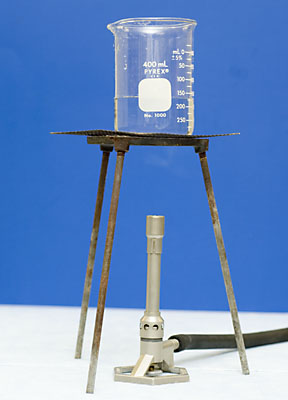 |
Place 150 mL of water in a 400 mL beaker and heat to 50–60˚C. |
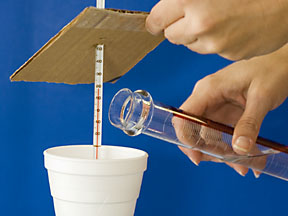 |
While the water is heating, measure out 50 mL of cold water in a graduated cylinder and place it in your calorimeter cup Monitor the temperature of the cold water in the cup until it remains constant for 2 to 3 readings at 30 second Intervals. |
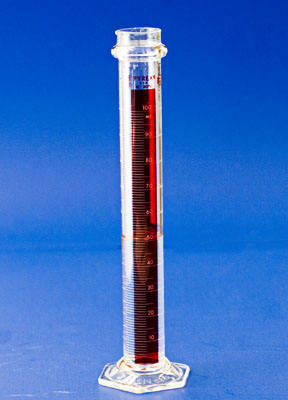 |
Measure 50 mL of your hot water into a graduated cylinder. |
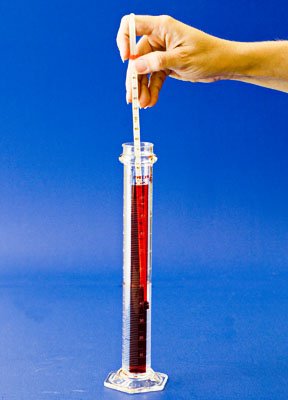 |
Using the thermometer record the temperature of the hot water. |
 |
Return the thermometer to the calorimeter cup and record the temperature for 3 readings at 30 second intervals. |
 |
Lift the lid of the calorimeter and pour the 50 mL of hot water in, mixing continuously. |
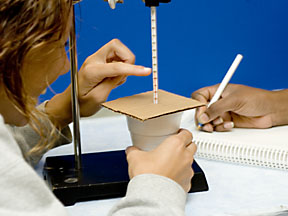 |
Record the temperature every 30 seconds until 10 minutes have elapsed. |
 |
Dispose of the water in the calorimeter down the sink and repeat the experiment Part A.. |
Experiment B: Determination of the Heat of Reaction of Mg(s) in HCl |
|
 |
Make sure your calorimeter cup is clean and dry and then add 100 mL of 1.0 M HCl to the cup. |
 |
Weigh out four strips of magnesium metal to the closest 0.001g. (You can choose to use any weighboat, watch glass etc. to contain the magnesium for weighing.) |
 |
Place the thermometer in the calorimeter cup and record the temperature for 3 readings at 30 second intervals. |
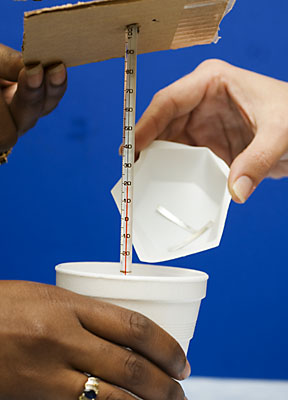 |
Lift the lid of the calorimeter and drop the pieces of magnesium in, mixing continuously. |
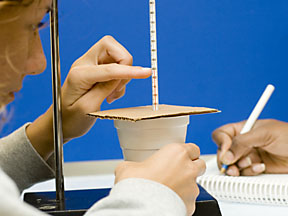 |
Record the temperature every 30 seconds until 10 minutes have elapsed. |
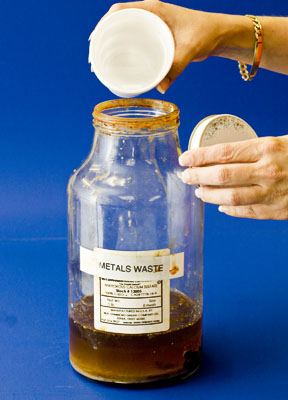 |
Dispose of the solution in the waste jar in the hood and rinse and dry the calorimeter cup thoroughly. |
Experiment C: Determination of the Heat of Reaction of MgO(s) in HCl |
|
 |
Add 100 mL of 1.0 M HCl to your calorimeter cup. (Make sure the cup was thoroughly rinsed and dried from the previous experiment) |
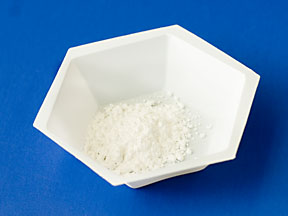 |
Weigh out ~0.50g of magnesium oxide to the closest 0.001g. (You can choose to use any weighboat, watch glass etc. to contain the magnesium for weighing.) Note: MgO is a powder that is vulnerable to being “blown” everywhere so be careful when transferring it to and from containers. |
 |
Place the thermometer in the calorimeter cup and record the temperature for 3 readings at 30 second Intervals. |
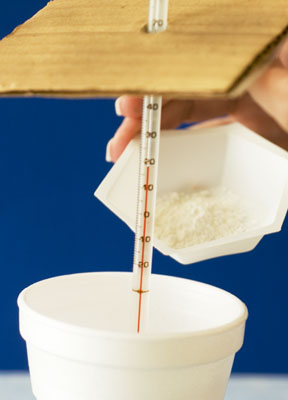 |
Lift the lid of the calorimeter and drop the magnesium oxide in, mixing continuously. (**IMPORTANT: If you do not stir at this point the MgO will drop to the bottom of the cup and the reaction will not be complete**) |
 |
Record the temperature every 30 seconds until 10 minutes have elapsed. |
 |
Dispose of the solution in the waste jar in the hood and rinse and dry the calorimeter cup thoroughly |

